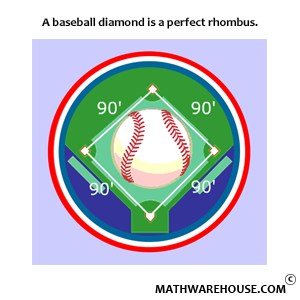When working with tables, the best we can do is estimate the limit value.
Examples
Example 1: Using Tables to Estimate Limits
Use the tables shown below to estimate the value of $$\displaystyle \lim_{x\to 5} f(x)$$.
$$ \begin{array}{l|c} {x} & {f(x)}\\ \hline 4.5 & 8.32571\\\hline 4.75 & 8.95692\\\hline 4.9 & 8.99084\\\hline 4.99 & 8.99987\\\hline 4.999 & 8.99992\\\hline 4.9999 & 8.99999\\\hline \end{array} $$
$$ \begin{array}{l|c} {x} & {f(x)}\\ \hline 5.5 & 9.64529\\\hline 5.25 & 9.26566\\\hline 5.1 & 9.04215\\\hline 5.01 & 9.00113\\\hline 5.001 & 9.00011\\\hline 5.0001 & 9.00001\\\hline \end{array} $$
Examine what happens as $$x$$ approaches from the left.
As the $$x$$-values approach 5...
$$
\begin{array}{l|c}
{x} & {f(x)}\\
\hline
4.5 & 8.32571\\\hline
4.75 & 8.95692\\\hline
4.9 & 8.99084\\\hline
4.99 & 8.99987\\\hline
4.999 & 8.99992\\\hline
4.9999 & 8.99999\\\hline
\end{array}
$$
...$$f(x)$$ seems to approach 9.
Examine what happens as $$x$$ approaches from the right.
As the $$x$$-values approach 5...
$$
\begin{array}{l|c}
{x} & {f(x)}\\
\hline
5.5 & 9.64529\\\hline
5.25 & 9.26566\\\hline
5.1 & 9.04215\\\hline
5.01 & 9.00113\\\hline
5.001 & 9.00011\\\hline
5.0001 & 9.00001\\\hline
\end{array}
$$
...$$f(x)$$ seems to approach 9.
Example 2: Using Tables to Estimate Limits
Using the tables below, estimate $$\displaystyle \lim_{x\to-8} f(x)$$.
$$ \begin{array}{l|c} {x} & {f(x)}\\ \hline -8.5 & 13.1365\\\hline -8.1 & -2.4336\\\hline -8.01 & -2.91313\\\hline -8.001 & -2.99131\\\hline -8.0001 & -2.99913\\\hline -8.00001 & -2.99991\\\hline \end{array} $$
$$ \begin{array}{l|c} {x} & {f(x)}\\ \hline -7.5 & -6\\\hline -7.9 & -5.5\\\hline -7.99 & -5.15\\\hline -7.999 & -5.015\\\hline -7.9999 & -5.0015\\\hline -7.99999 & -5.00015\\\hline \end{array} $$
Examine what happens as $$x$$ approaches from the left.
As the $$x$$-values approach -8...
$$
\begin{array}{l|c}
{x} & {f(x)}\\
\hline
-8.5 & 13.1365\\\hline
-8.1 & -2.4336\\\hline
-8.01 & -2.91313\\\hline
-8.001 & -2.99131\\\hline
-8.0001 & -2.99913\\\hline
-8.00001 & -2.99991\\\hline
\end{array}
$$
...$$f(x)$$ seems to approach -3.
Examine what happens as $$x$$ approaches from the right.
As the $$x$$-values approach -8...
$$
\begin{array}{l|c}
{x} & {f(x)}\\
\hline
-7.5 & -4\\\hline
-7.9 & -3.5\\\hline
-7.99 & -3.15\\\hline
-7.999 & -3.015\\\hline
-7.9999 & -3.0015\\\hline
-7.99999 & -3.00015\\\hline
\end{array}
$$
...$$f(x)$$ seems to approach -3.
Practice Problems
Examine what happens as $$x$$ approaches from the left.
As the $$x$$-values approach 12 from the left...
$$
\begin{array}{l|c}
{x} & {f(x)}\\
\hline
11.5 & 7\\\hline
11.9 & 7.5\\\hline
11.99 & 7.9\\\hline
11.999 & 7.99\\\hline
11.9999 & 7.999\\\hline
11.99999 & 7.9999\\\hline
\end{array}
$$
...$$f(x)$$ seems to approach 8.
Examine what happens as $$x$$ approaches from the right.
As the $$x$$-values approach 12 from the right
$$
\begin{array}{l|c}
{x} & {f(x))}\\
\hline
12.5 & 8.5\\\hline
12.1 & 8.1\\\hline
12.01 & 8.01\\\hline
12.001 & 8.001\\\hline
12.0001 & 8.0001\\\hline
12.00001 & 8.00001\\\hline
\end{array}
$$
...f(x) seems to approach 8.
Examine what happens as $$x$$ approaches from the left.
As the $$x$$-values approach $$\frac{1}{2}$$ from the left...
$$
\begin{array}{l|c}
{x} & {f(x)}\\
\hline
0 & 1.7\\\hline
0.2 & 1.75\\\hline
0.4 & 1.795\\\hline
0.45 & 1.7995\\\hline
0.49 & 1.79995\\\hline
0.499 & 1.79999\\\hline
\end{array}
$$
...$$f(x)$$ seems to approach 1.8.
Examine what happens as $$x$$ approaches from the right.
As the $$x$$-values approach $$\frac{1}{2}$$ from the right
$$
\begin{array}{l|c}
{x} & {f(x)}\\
\hline
1 & -2.44445\\\hline
0.8 & -2.55556\\\hline
0.6 & -2.66667\\\hline
0.55 & -2.77778\\\hline
0.51 & -2.88889\\\hline
0.501 & -2.99999\\\hline
\end{array}
$$
$$f(x)$$ seems to approach -3.
Examine what happens as $$x$$ approaches from the left.
As the $$x$$-values approach 0.75 from the left...
$$
\begin{array}{l|c}
{x} & {f(x)}\\
\hline
0.7 & 0.1\\\hline
0.72 & -0.01\\\hline
0.74 & 0.001\\\hline
0.749 & -0.0001\\\hline
0.7499 & 0.00001\\\hline
0.74999 & -0.000001\\\hline
\end{array}
$$
...$$f(x)$$ seems to approach 0.
Examine what happens as $$x$$ approaches from the right.
As the $$x$$-values approach 0.75 from the right...
$$
\begin{array}{l|c}
{x} & {f(x)}\\
\hline
0.8 & 0.3\\\hline
0.78 & -0.06\\\hline
0.76 & 0.0012\\\hline
0.751 & -0.0006\\\hline
0.7501 & 0.00003\\\hline
0.75001 & -0.000006\\\hline
\end{array}
$$
...$$f(x)$$ seems to approach 0.
$$\lim\limits_{t\to0.75} f(x) \approx 0$$
Examine what happens as $$x$$ approaches from the left.
As the $$x$$-values approach 10 from the left...
$$
\begin{array}{l|c}
{x} & {f(x)}\\
\hline
9.5 & 2.3\\\hline
9.9 & 1.8\\\hline
9.99 & 8.3\\\hline
9.999 & 0.8\\\hline
9.9999 & 9.8\\\hline
9.99999 & 2.6\\\hline
\end{array};
$$
...$$f(x)$$ doesn't seem to approach anything.
Examine what happens as $$x$$ approaches from the right
As the $$x$$-values approach 10 from the right...
$$
\begin{array}{l|c}
{x} & {f(x)}\\
\hline
10.5 & 1.1\\\hline
10.1 & 5.8\\\hline
10.01 & 3.6\\\hline
10.001 & 2.9\\\hline
10.0001 & 5.4\\\hline
10.00001 & 12.5\\\hline
\end{array};
$$
...$$f(x)$$ doesn’t seem to approach anything.
Examine what happens as $$x$$ approaches from the left.
As the $$x$$-values approach -3 from the left...
$$
\begin{array}{l|c}
{x} & {f(x)}\\
\hline
-4 & 6\\\hline
-3.5 & 61\\\hline
-3.1 & 611\\\hline
-3.01 & 6111\\\hline
-3.001 & 61,111\\\hline
-3.0001 & 611,111\\\hline
\end{array}
$$
...$$f(x)$$ keeps getting larger.
Examine what happens as $$x$$ approaches from the right.
As the $$x$$-values approach 3 from the right...
$$
\begin{array}{l|c}
{x} & {f(x)}\\
\hline
-2 & 7\\\hline
-2.5 & 72\\\hline
-2.9 & 788\\\hline
-2.99 & 7656\\\hline
-2.999 & 77,701\\\hline
-2.9999 & 711,000\\hline
\end{array}
$$
...$$f(x)$$ keeps getting larger.














